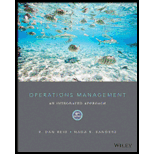
(a)
Interpretation:
The mean observed time for each element.
Concept Introduction:
The time taken to complete a particular task is said to be observed time. This is one of the factors which is used to calculate the standard time.
(b)
Interpretation:
The normal time for each element.
Concept Introduction:
Normal time also called as the base time or levelled time is the time that a trained worker needs to complete the task at a normal pace.
(c)
Interpretation:
The standard time for each element and for the entire job, if the allowance factor is 15 percent of job time.
Concept Introduction:
The time required by an average trained worker, working at a usual pace for performing a specific task with the help of a recommended method is termed as standard time.
(d)
Interpretation:
The worker performs at
Concept Introduction:
The time required by an average trained worker, working at a usual pace for performing a specific task with the help of a recommended method is termed as Standard time.
(e)
Interpretation:
The worker performs at
Concept Introduction:
The time required by an average trained worker, working at a usual pace for performing a specific task with the help of a recommended method is termed as Standard time.
(f)
Interpretation:
The units to be completed in one hour.
Concept Introduction:
The time required by an average trained worker, working at a usual pace for performing a specific task with the help of a recommended method is termed as Standard time.
(g)
Interpretation:
The new standard time for the navigator, if the mean observed time for element
Concept Introduction:
The time required by an average trained worker, working at a usual pace for performing a specific task with the help of a recommended method is termed as Standard time.
(h)
Interpretation:
The reduction in time using the new process, if the company builds
Concept Introduction:
The time required by an average trained worker, working at a usual pace for performing a specific task with the help of a recommended method is termed as Standard time.
Trending nowThis is a popular solution!

Chapter 11 Solutions
Operations Management, Binder Ready Version: An Integrated Approach
- in the 2016 "ATB: Digital Disruption in the parking meter industry" case what recommendations would you give to adress the key issues outlined in the case?arrow_forward1) JIT McDonald’s Style (https://media.gaspar.mheducation.com/GASPARPlayer/play.html?id=46KGfedfilYlJzWH4XxxbLS) What challenges did McDonald’s face with its current operating system? 2. What are the five criteria that McDonald’s new “Made for You” operating system had to meet? 3. Describe how the “Made for You” operating system works.arrow_forwardThe first general topic debated in the SHRM Learning System centers around talent acquisition and retention. Discuss how talent is different from skills, and offer two strategies a human resources professional can pursue to recruit “talent” to an organization.arrow_forward
- What assumptions or biases do you have related to the case? Gather the facts. Known and to be gathered. Identify the stakeholders and their viewpoints. Include the values, obligations and interests of each of the stakeholders. Primary Secondaryarrow_forwardPerform an internal analysis using SWOT and VRIO analysis of the " ATB: Digital disruption in the parking meter industry" casearrow_forwardPerform a External analysis using PESTEL and Porters five force analysis on the "ATB: Digital disruption in the parking meter industry" casearrow_forward
- There was a most recent poll for which 571 adults that flew in the past year had info collected. This info was their number 1 complaints about flying. A - small cramped seat - 45 complaints B - cost - 18 complaints C - fear or dislike - 81 complaints D - security - 123 complaints E - Poor service - 12 complaints F - Conntected flight issue - 8 complaints G - overcrowded - 41 complaints H - Late and wait - 81 complaints I - Food - 5 complaints J - Lost/missing luggage - 5 complaints K - Other - 51 complaints What percentage of those surveyed found nothing they didnt dislike?arrow_forwardCan you help me with this, and explain what a product by value analysis is? Thanks in advancearrow_forwardOperations Management Questionarrow_forward
- can you explain and breakdown the "ATB: digital disruption in the parking meter industry" case in detail outlining the key issuesarrow_forwardAt Quick Car Wash, the wash process is advertised to take less than 6 minutes. Consequently, management has set a target average of 330 seconds for the wash process. Suppose the average range for a sample of 7 cars is 10 seconds. Use the accompanying table to establish control limits for sample means and ranges for the car wash process. Click the icon to view the table of factors for calculating three-sigma limits for the x-chart and R-chart. The UCLR equals seconds and the LCLR equals seconds. (Enter your responses rounded to two decimal places.)arrow_forwardIf Jeremy who is the VP for the operations, proceeds with their existing prototype (which is option a), the firm can then expect sales to be 120,000 units at $550 each. And with a probability of 0.52 and a 0.48 probability of 65,000 at $550. we However, he uses his value analysis team (option b), the firm expects sales of 75,000 units at $770, with a probability of 0.78 and a 0.22 probability of 65,000 units at $770. Value engineering, at a cost of $100,000, is only used in option b. Which option for this has the highest expected monetary value (EMV)? The EMV for option a is $? The EMV for option b is $? Which has the highest expected monetary value. A or B?arrow_forward
 Practical Management ScienceOperations ManagementISBN:9781337406659Author:WINSTON, Wayne L.Publisher:Cengage,
Practical Management ScienceOperations ManagementISBN:9781337406659Author:WINSTON, Wayne L.Publisher:Cengage,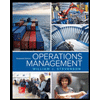 Operations ManagementOperations ManagementISBN:9781259667473Author:William J StevensonPublisher:McGraw-Hill Education
Operations ManagementOperations ManagementISBN:9781259667473Author:William J StevensonPublisher:McGraw-Hill Education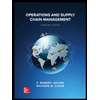 Operations and Supply Chain Management (Mcgraw-hi...Operations ManagementISBN:9781259666100Author:F. Robert Jacobs, Richard B ChasePublisher:McGraw-Hill Education
Operations and Supply Chain Management (Mcgraw-hi...Operations ManagementISBN:9781259666100Author:F. Robert Jacobs, Richard B ChasePublisher:McGraw-Hill Education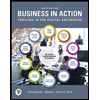
 Purchasing and Supply Chain ManagementOperations ManagementISBN:9781285869681Author:Robert M. Monczka, Robert B. Handfield, Larry C. Giunipero, James L. PattersonPublisher:Cengage Learning
Purchasing and Supply Chain ManagementOperations ManagementISBN:9781285869681Author:Robert M. Monczka, Robert B. Handfield, Larry C. Giunipero, James L. PattersonPublisher:Cengage Learning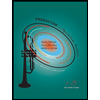 Production and Operations Analysis, Seventh Editi...Operations ManagementISBN:9781478623069Author:Steven Nahmias, Tava Lennon OlsenPublisher:Waveland Press, Inc.
Production and Operations Analysis, Seventh Editi...Operations ManagementISBN:9781478623069Author:Steven Nahmias, Tava Lennon OlsenPublisher:Waveland Press, Inc.





